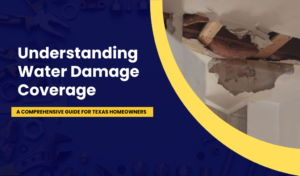The fatigue that businesses are feeling, after multiple years of rising commercial auto insurance rates, is real. Factors ranging from the rise in attorney representation in bodily injury claims to the higher costs of replacement parts for technically complex cars and trucks continue to drive up claim costs for insurance carriers. Distracted driving, heavily impacted by mobile phone usage, continues to pose serious risks to all drivers. Further compounding the issue, the COVID-19 pandemic has added supply chain blockages, labor shortages and inflationary pressures that all but promise to extend the need for rate increases. Meanwhile, with drivers returning to the roads at more normal levels post 2020 lockdowns and courts reopening, the negative trend of rising bodily injury costs is expected to resume. Auto Rate Increases Show No Signs of SlowingIn this article, we’ll explain:
- What you need to know about the shortages and inflation
- How they could impact your commercial auto premiums
- Other factors that are causing insurance prices to go up
- What you can do to gain more control over your business insurance costs
Car and Truck Shortages There are currently many stressors on new car and truck inventories. The pandemic, along with other factors, made it nearly impossible to build vehicles and produce parts throughout most of the world for months and months. Shortages of raw materials (steel, glass, aluminum) used in vehicle manufacturing and precious metals used in computer chips so critical to car technology are the main culprits. Additional supply chain blockages and worker shortages have only compounded the problem. This means there simply aren’t enough new cars, trucks, and other vehicles available to meet customer demand. While the shortage is making the limited number of new autos more expensive, the resulting demand for used cars presents the most direct impact to commercial auto insurance claim costs. That’s because when a car is declared a total loss after a crash, insurance carriers generally pay claims based on the current value of the used car or truck, also known as the actual cash value. According to Cox Automotive, used car inventories are running 53 percent below August 2020 levels and 68 percent below 2019 levels.1 With inventories at record lows and demand surging, U.S. Bureau of Labor Statistics and Manheim Consulting2 pegs the cost of new vehicles at around 50% higher in October 2021 than they were in the quarter leading into the pandemic shutdowns (January to March 2020). Heavier trucks are not immune to this trend. Used Class 8 truck prices were up 57% in September 2021 vs the prior year, passing $100,000 for the second month in a row. Industry experts believe it could take well into 2023 for new car and truck supplies to return to normal. This is all dependent on the future of the pandemic and resolving supply chain issues. Auto Parts and Worker Shortages
The same parts that are required to build new cars are also needed to repair them after an accident. The parts shortage is contributing to an increase in vehicle repair costs. According to CCC Intelligent Solutions, in the first 10 months of October 2021, the average part has increased in price by six percent.3 The higher cost of parts is being passed on to insurers paying for repairs. It’s also difficult to get certain parts due to uncertainties related to the supply chain, resulting in longer than usual repair times. As with many other businesses, auto repair shops are having difficulty hiring qualified repair technicians, another factor behind the increase in repair times. Businesses with cars that are not drivable rely on rental cars for longer periods, a cost usually paid for by the insurance company, up to certain limits. According to Collision Week,4 during the third quarter of 2021, the overall length of rental (LOR) for collision replacement related rentals is 15.2 days, an increase of almost three full days compared to the same period a year earlier. Legal Liability in the Age of the Nuclear VerdictThe impact of escalating legal judgments and claim-related payouts is another factor in rising insurance rates. Legal judgements against businesses slowed some during the coronavirus pandemic, when courts were closed and fewer court cases tried. The trend is widely expected to return as courts ramp back up. Some of the issues contributing to these higher verdicts against businesses include: Mistrust of corporations. An increasing number of people believe that companies are unlikely to do the right thing, a societal trend leading to more people filing lawsuits and, when on a jury, deciding in favor of plaintiffs. Plaintiff attorneys are becoming more sophisticated. Many have invested a significant amount in tactics to increase the number of clients they represent and overall number of lawsuits, including:
- Strategic marketing and advertising
- Legal data and analytic capabilities
- Call centers
- Legal referral and client lead companies
Plaintiff attorneys have also increased the use of policy-limit demands as a tactic to make insurers, who have a duty to protect their insureds, make difficult decisions on the settlement of a claim when the appropriate information is not yet available. In addition to this, they have become more active in finding favorable venues for their cases and using social media to screen jurors.Changes in the legal environment. The trend of juries assigning broad responsibility to corporations beyond what it stipulated in contracts, has increasingly resulted in often outsized verdicts for plaintiffs. All these pressures contribute to more verdicts in favor of plaintiffs and larger payouts to them. The higher costs are passed on to insurance companies, which may lead to increased premiums. What Businesses Can Do to Gain More Control Over Their Insurance Costs While it may seem impossible to do anything about the remarkable number of shortages and other factors that are all contributing to increased commercial vehicle insurance costs, it may be possible to offset them in several ways. Consider these ways to save: Implement workplace safety practices including programs that encourage safe driving to help reduce the number of claims your company faces in the first place. Consolidate more of your business insurance coverage with a single provider to earn discounts. Ask your insurance agent to review your coverage and look for ways to get the best value for the right protection. Use telematics to monitor worker driving habits and manage vehicle maintenance.





 by Sparrow Websites
by Sparrow Websites